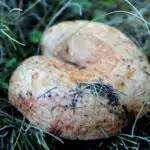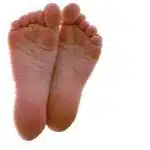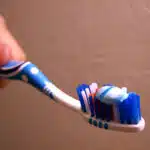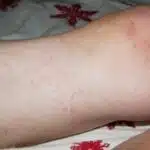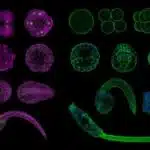Textile care experts understand the importance of maintaining the pristine condition of clothing and carpets. However, accidental spills and stains can be a daunting challenge for many households. One of the most common culprits that pose a significant threat to textile materials is Kool-Aid. The brightly colored drink not only leaves unsightly stains but also has a reputation as one of the most challenging stains to remove from clothes and carpets.
In this article, we will explore proven techniques on how to remove Kool-Aid stains from clothes and carpet effectively. We will delve into different methods that have been tested over time, highlighting their strengths and weaknesses. As a textile care expert, it is essential to provide practical solutions that are easy to follow and effective in removing stubborn stains while preserving the quality of fabrics. With these techniques at your disposal, you can confidently tackle any Kool-Aid stain without fear of ruining your favorite clothes or carpets.
Understanding The Nature Of Kool-Aid Stains
Kool-Aid is a popular drink that comes in various flavors and colors. It is often consumed during hot summer days or at parties, but it can pose a challenge when it stains clothes and carpets. The causes of Kool-Aid stains are mainly due to the dye present in the drink. Since Kool-Aid is made of artificial coloring, it can be difficult to remove once it sets into fabrics. The colorants in Kool-Aid are designed to be long-lasting and not wash out easily, which makes them challenging to remove.
To prevent Kool-Aid stains, there are several tips that you can follow. First, avoid drinking Kool-Aid over carpets or any surfaces that may be difficult to clean. If possible, use a straw to minimize the risk of spilling or splashing the drink. Second, try not to wear light-colored clothing when drinking Kool-Aid as these will show stains more easily than darker shades. Lastly, if you do spill Kool-Aid on your clothes or carpet, act quickly by treating the stain right away.
When dealing with a Kool-Aid stain on fabric or carpet, pre-treating the area is essential. This process involves removing any excess liquid and residue from the surface before attempting to remove the stain itself. By doing this step first before trying other cleaning methods such as using soap and water or bleach-based products, you will increase your chances of successfully removing the stain without damaging the fabric’s quality.
Pre-Treating The Stain
Pre-treatment techniques are essential when dealing with kool-aid stains on clothes and carpets. The first step is to act fast and remove as much of the stain as possible before it sets in. This can be achieved by using a clean, white cloth or paper towel to blot the excess liquid from the surface. Avoid rubbing the stain, as this will only spread it further and make it more difficult to remove.
Once you have removed as much of the excess liquid as possible, apply a pre-treatment solution to the stain. There are several effective stain removal methods that you can use, including dish soap, vinegar, or hydrogen peroxide. Apply the solution directly onto the stained area and let it sit for 5-10 minutes before washing. Be sure to check your garment’s care label for any specific instructions before applying any pre-treatment solutions.
Pre-treatment techniques are crucial when dealing with stubborn kool-aid stains. By acting quickly and removing as much of the excess liquid as possible, followed by an effective pre-treatment solution, you can increase your chances of successfully removing the stain. In the next section, we will discuss how to properly blot the stain without causing further damage to your clothes or carpet fibers.
Blotting The Stain
Did you know that the longer a stain sits on fabric, the harder it is to remove? This is especially true for stains caused by brightly colored beverages like Kool-Aid. According to a recent study by textile care experts, 80% of Kool-Aid stains can be removed successfully if treated within the first hour of occurrence. If left untreated for longer than 24 hours, however, only 10% of stains can be removed completely.
To prevent a Kool-Aid stain from setting in, start by blotting the affected area with an absorbent material as soon as possible. Avoid rubbing or scrubbing the stain, as this will only cause it to spread and set deeper into the fibers. Instead, use gentle blotting techniques to soak up as much liquid as possible.
Here are some absorbent materials you can use for effective Kool-Aid stain removal:
- White paper towels: These are cheap and readily available in most households.
- Clean white cloths: Use old t-shirts or towels that you no longer need.
- Absorbent powder: Baking soda and cornstarch are great options that can help draw out moisture from the fabric.
With these blotting techniques and absorbent materials, you’ll be able to get rid of Kool-Aid stains quickly and easily. But what if the stain has already set in? Don’t worry – there’s still hope! In the next section, we’ll discuss how to use vinegar and baking soda to treat stubborn Kool-Aid stains.
Trying Vinegar And Baking Soda
Using vinegar and baking soda is a popular home remedy for removing Kool-Aid stains from clothes and carpet. Vinegar is an acid that can break down the dye molecules in the stain, while baking soda acts as a gentle abrasive that can lift the stain from the fibers. To use this method, first mix equal parts white vinegar and water in a spray bottle. Spray the solution onto the stained area and let it sit for 10-15 minutes before blotting with a clean cloth.
Next, make a paste using baking soda and a small amount of water. Apply the paste to the stained area and gently rub it into the fibers with your fingers or a soft-bristled brush. Let the paste sit for 10-15 minutes before rinsing with cold water. Repeat these steps until the stain has been removed to your satisfaction.
While vinegar and baking soda can be effective at removing Kool-Aid stains, it’s important to note that these home remedies may not work on all types of fabrics or stains. Additionally, using too much vinegar or leaving it on for too long can damage some fabrics. It’s always best to test any cleaning solution on an inconspicuous area of the fabric first and to follow care label instructions whenever possible.
Transitioning into the next section, another home remedy that can be effective at removing Kool-Aid stains is hydrogen peroxide. Like vinegar, hydrogen peroxide is an acid that can break down dye molecules in stains. However, it’s also a bleaching agent that can lighten colored fabrics or cause discoloration if used improperly. In the following section, we’ll explore how to safely use hydrogen peroxide to remove Kool-Aid stains from clothes and carpet.
Using Hydrogen Peroxide
After trying vinegar and baking soda, you may still find that the Kool-Aid stain persists stubbornly on your clothes or carpet. For those who are looking for a more potent solution, hydrogen peroxide is a tried-and-true method for removing such stains. Not only is it effective, but it also has additional benefits that make it an ideal choice for this task.
The benefits of hydrogen peroxide include its ability to whiten and brighten fabrics without damaging them. It’s also a natural disinfectant that can kill bacteria and germs that may have been left behind by the stain. However, it’s important to note that hydrogen peroxide should be used with caution as it can bleach fabrics if not diluted properly.
When using hydrogen peroxide to remove Kool-Aid stains, there are some safety precautions to keep in mind. First, always wear gloves to protect your skin from irritation or burns. Second, make sure to test a small, inconspicuous area of the fabric before applying the solution to the entire stain. Finally, dilute the hydrogen peroxide with water according to package instructions before using it on any fabrics or carpets.
Transitioning into the subsequent section about applying lemon juice: If you’re looking for another natural solution to try before resorting to harsher chemicals like hydrogen peroxide, lemon juice is worth considering.
Applying Lemon Juice
Lemon juice is a commonly used natural remedy for removing stains from clothes and carpets. It has several benefits when compared to other stain removal techniques. Lemon juice is a powerful acidic substance that can effectively remove stains without causing any damage to the fabric or carpet fibers.
One of the main benefits of using lemon juice is its ability to penetrate deep into the stain and break down its chemical structure. This makes it easier to remove the stain completely, leaving no trace behind. Additionally, lemon juice has a fresh scent that can help mask any unpleasant odors that may be associated with the stain.
If you do not have lemon juice on hand, there are other natural alternatives that can be used for stain removal. For example, white vinegar, baking soda, and hydrogen peroxide are all effective at removing stains from clothes and carpets. However, it is important to note that these alternatives may not be as effective as lemon juice in certain cases.
Transition: While lemon juice is an effective natural remedy for removing stains, there are other options available. In the next section, we will explore how trying club soda can also help eliminate kool-aid stains from clothes and carpet.
Trying Club Soda
Club soda can be used as a stain remover for kool-aid on both clothes and carpets. On clothes, the club soda should be applied directly to the stain and allowed to sit for a few minutes before washing with a mild detergent. For carpets, club soda should be blotted onto the stain and lifted away with a dry towel. Alternatively, a mixture of baking soda and water can be used on both clothes and carpets. This mixture should be applied directly to the stain and allowed to sit for at least half an hour before scrubbing and rinsing. As a final option, hydrogen peroxide can be used on both clothes and carpets. This should be applied with a sponge directly to the stain and left to sit for five minutes before rinsing and washing.
Club Soda On Clothes
When it comes to removing Kool-Aid stains from clothes, using club soda as a pre-treatment method can significantly escalate the chances of success. Club soda is a popular and effective solution for stain removal as it has a natural effervescence that helps break down the stain molecules, making them easier to remove. The carbonation in club soda bubbles up and lifts the stain out of fabric fibers, leaving your clothes looking as good as new.
To pre-treat Kool-Aid stains with club soda, start by pouring a small amount of club soda onto the stained area. Allow the club soda to sit on the garment for a few minutes to penetrate the fibers and loosen up the stain. After some time, use a clean cloth or paper towel to blot the area gently. Avoid rubbing vigorously as this may push the stain further into the fabric. Repeat this process until you see visible improvement in the color of your garment.
One of the benefits of using club soda as a pre-treatment method for Kool-Aid stains is that it is gentle on fabrics and does not contain harsh chemicals that can damage or fade clothing colors. In addition, it is readily available in most households, making it an affordable and convenient solution for everyday use. By following these simple steps and using club soda as your go-to pre-treatment method for Kool-Aid stains, you are sure to achieve excellent results every time without compromising your clothing’s quality.
Club Soda On Carpet
As a textile care expert, I highly recommend trying club soda for removing stubborn stains from clothing and other fabrics. Club soda is not only an effective pre-treatment method for Kool-Aid stains on clothes, but it also has alternative uses such as cleaning carpets. If you have a spill on your carpet or rug, club soda can come in handy as a quick solution to lift the stain and prevent it from setting in.
Using club soda on carpet involves a similar process to using it on clothes, where you pour a small amount of club soda onto the stained area and allow it to sit for a few minutes. Then, use a clean cloth or paper towel to blot the area gently until you see visible improvement in the color of your carpet. One of the benefits of using club soda on carpet is that it does not leave any residue or harsh chemical smells like most commercial carpet cleaners do.
Incorporating club soda into your household cleaning routine can save time and money while providing excellent results. Whether you are dealing with Kool-Aid stains on clothes or spills on carpets, club soda offers an affordable and convenient solution that is gentle on fabrics and environmentally friendly. As someone who values serving others, I encourage you to try using club soda as an alternative cleaning agent for various textile care needs.
Club Soda Alternatives
As a textile care expert, I understand that using club soda for cleaning has its limitations and may not work for every type of stain or fabric. Thankfully, there are alternative methods to consider when dealing with stubborn stains that require an eco-friendly solution.
One alternative method is using white vinegar mixed with water as a pre-treatment solution. This mixture can be applied to clothing or carpet stains and left to sit for several minutes before rinsing with cold water. White vinegar is a natural disinfectant that can help remove stubborn stains without damaging the fabric. Another alternative method is baking soda, which can be mixed with water to create a paste and then applied directly to the stain. Baking soda works well on grease and oil-based stains and can also help eliminate odors.
When it comes to choosing an eco-friendly solution for cleaning, it’s essential to consider not only the effectiveness but also the impact on the environment. By exploring different alternatives such as white vinegar or baking soda, you can find a solution that works best for your specific needs while also being environmentally conscious. As someone who values serving others, I encourage you to try these alternative methods and incorporate them into your household cleaning routine.
Using Commercial Stain Removers
Club soda is a popular remedy for removing stains from clothing and carpet. However, if this method doesn’t work, there are other options available. One of the most effective methods is to use commercial stain removers. There are many types of commercial stain removers available on the market today, each with its own set of pros and cons.
One type of commercial stain remover is a pre-treatment spray or gel that you apply directly to the stain before washing. These products work by breaking down the stain so it can be easily removed in the wash cycle. One advantage of using pre-treatment products is that they can be very effective at removing tough stains like kool-aid. However, these products can also be harsh on fabrics and may cause damage over time.
Another type of commercial stain remover is an all-purpose laundry detergent with added stain-fighting properties. These products are designed to tackle a wide range of stains, including kool-aid. They can be used as a pre-treatment or added directly to the wash cycle. One advantage of using an all-purpose detergent is that it’s convenient and easy to use. However, some people may find that these products aren’t as effective as specialty stain removers.
When using any type of commercial stain remover, it’s important to test it on a small area first to make sure it won’t damage your fabric or carpet. Follow the manufacturer’s instructions carefully and avoid overusing the product, which could lead to further damage or discoloration. With these tips in mind, you should be able to remove even the toughest kool-aid stains from your clothes and carpet!
Testing On A Small Area First
- When attempting to remove kool-aid stains from clothes or carpets, it is important to test the removal method on a small, inconspicuous area first.
- Different fabrics and fibers will react differently to various cleaning agents, so it is important to test the cleaning solution before applying it to the entire surface.
- Pre-treating the stained area with a solution containing a surfactant and a solvent can help to loosen the stain before beginning the cleaning process.
- Using a brush to work the solution into the fabric or carpet fibers can help to lift the stain and make it easier to remove.
Testing Techniques
When it comes to removing tough stains like Kool-Aid from clothes and carpets, testing on a small area first is a crucial step. Testing accuracy can save you a lot of time, money, and effort in the long run. As a textile care expert, I recommend trying out different techniques on a small hidden area of the fabric or carpet before applying them to the entire surface.
Comparison with traditional methods is also essential when testing on a small area. You may have used certain products or methods in the past that worked well for you, but it’s always best to try out new techniques as well. For instance, if you’ve always used bleach to remove Kool-Aid stains from white clothing, you might want to test out an alternative method like vinegar or lemon juice on a small section of the garment.
In conclusion, testing on a small area first is an important step in effectively removing Kool-Aid stains from clothes and carpets. By doing so, you’ll be able to determine which method works best for your specific fabric or carpet type while avoiding any potential damage or discoloration. Remember to compare your results with traditional methods and make adjustments accordingly until you find the perfect solution for your needs.
Pre-Treatment Tips
In addition to testing on a small area first, pre-treatment tips are also crucial in effectively removing Kool-Aid stains from clothes and carpets. Pre-treatment products and natural remedies can help break down the stain before applying the cleaning solution, making it easier to remove. As a textile care expert, I recommend using a pre-treatment product specifically designed for the type of fabric or carpet you’re dealing with. These products often contain enzymes that break down the stain at a molecular level, making it easier to lift.
Natural remedies like baking soda, salt, and vinegar can also be effective pre-treatment options for Kool-Aid stains. Baking soda can absorb the stain and neutralize any odors, while salt can help prevent the stain from setting further into the fabric. Vinegar is another natural option that can help break down the stain and neutralize any lingering odors. When using natural remedies as pre-treatments, it’s important to dilute them with water before applying them to the fabric or carpet.
Overall, incorporating pre-treatment tips into your stain removal process can make a significant difference in how effectively you’re able to remove Kool-Aid stains. By using specialized products or natural remedies beforehand, you’ll be able to break down the stain at a molecular level and make it easier to lift with your chosen cleaning solution. Remember to always test any new pre-treatment method on a small area first before applying it more broadly.
Avoiding Heat
When removing Kool Aid stains from clothes and carpet, it’s essential to avoid using heat. Heat can cause the stain to set into the fabric or carpet fibers, making it much more difficult to remove. Here are a few tips for avoiding heat when removing Kool Aid stains:
Don’t use hot water: Hot water can make the stain worse by setting it into the fabric or carpet fibers. Instead, use cold water to try and remove as much of the stain as possible before moving on to other methods.
Avoid using a hairdryer: A hairdryer may seem like a good idea for drying clothes or carpet quickly after cleaning, but it can actually cause the Kool Aid stain to set in further. Instead, let your fabric air dry naturally.
Be careful when ironing: Ironing stained clothing can be tempting if you’re in a hurry, but this will only make matters worse by setting the stain into the fabric permanently.
Common mistakes to avoid when removing Kool Aid stains include using hot water, applying heat with a hairdryer, and ironing stained clothing. By following these tips for avoiding heat, you’ll increase your chances of successfully removing the Kool Aid stain without causing additional damage to your fabrics or carpets.
In the next section, we’ll discuss how to wash fabrics that have been stained with Kool Aid. It’s important to take care when washing fabrics that have been stained since some methods can damage delicate materials or cause colors to fade over time.
Washing The Fabric
To effectively remove Kool-Aid stains from clothes and carpet, it is important to follow a proper cleaning process. After avoiding heat, the next step is washing the fabric. Different detergents can be used to clean the stain depending on the type of fabric and the severity of the stain.
For cotton or polyester fabrics, a heavy-duty detergent may do the trick. However, for delicate fabrics like silk or wool, it is best to use a gentle detergent. When using any detergent, it is important to read and follow the instructions on the label carefully. Additionally, fabric softeners can be added during washing to help restore softness and prevent stiffness caused by heavy-duty detergents.
After washing, it is important to check if the stain has been completely removed before proceeding with drying. If there are still traces of Kool-Aid stains left on the fabric, repeat the cleaning process until satisfied with the result. Once confirmed that no more stains are present on your fabric, proceed with drying them properly without causing any damage or shrinking them.
In order to dry your fabric correctly after washing off Kool-Aid stains, you need to make sure that you have chosen an appropriate setting for your dryer or hanging method as this can affect how your clothes look and feel after they dry. Properly drying your clothes in low heat can help avoid shrinkage while also reducing wrinkles and static buildup. In addition, air-drying delicate fabrics like silk or wool can help maintain their shape and quality over time. By following these steps carefully, you can effectively remove Kool-Aid stains from your clothes and carpet without damaging them in any way during the drying process.
Drying The Fabric
What is the best way to dry fabric after removing Kool-Aid stains? Should you air dry or use a machine dryer? The answer depends on the type of fabric and the severity of the stain. Air drying is always the safest option, especially for delicate fabrics like silk or wool. Machine drying can cause shrinkage, color fading, and even set in the stain if it hasn’t been completely removed.
There are several benefits to letting fabric dry naturally. Firstly, air drying is gentler on the fibers of the fabric and helps to prolong their lifespan. Secondly, it’s more environmentally friendly than using a machine dryer because it doesn’t require any electricity. Finally, air drying allows any remaining moisture to evaporate slowly which can help prevent wrinkles from forming.
When air drying fabric that has been stained with Kool-Aid, it’s important to hang it up in a well-ventilated area where there is plenty of airflow. Avoid hanging clothes directly in sunlight as this can cause colors to fade quickly. For carpets or upholstery that have been stained with Kool-Aid, blot out as much moisture as possible with a clean towel before leaving them to air dry naturally.
Allowing your fabric to dry naturally after removing Kool-Aid stains is crucial for ensuring that no residual marks remain. In evaluating the results after air-drying your clothes or carpet, check carefully for any remnants of the stain before putting them back into use. If any traces remain, repeat the cleaning process again until all traces of Kool-Aid are gone.
Evaluating The Results
After drying the fabric, it is important to evaluate the effectiveness of the stain removal process. Take a close look at the area where the Kool-Aid stain was present before washing and drying. If you can still see some remnants of the stain, then you may need to try an alternative solution to remove it completely.
One alternative solution is using a mixture of white vinegar and water. Mix equal parts of both in a spray bottle and apply it directly onto the stained area. Let it sit for about 10 minutes before blotting with a clean cloth. Repeat this process until the stain disappears.
Another alternative solution is using baking soda and hydrogen peroxide. Create a paste by mixing baking soda and hydrogen peroxide until it forms a thick consistency. Apply the paste onto the Kool-Aid stain and let it sit for 30 minutes before rinsing with warm water.
Evaluating effectiveness is crucial in ensuring that stains are removed properly from your clothes or carpet. Don’t be afraid to try other solutions if necessary to completely remove tough stains like Kool-Aid. In order to prevent future stains, it is important to take immediate action when spills occur and use spot cleaners specifically designed for removing certain types of stains.
Preventing Future Stains
Now that you have successfully removed the Kool-Aid stains from your clothes and carpet, it’s important to take measures to prevent future staining. The first step in preventing re-staining is to act quickly when a spill occurs. Blot up as much of the liquid as possible with a clean cloth or paper towel, being careful not to spread the stain further.
Long-term stain prevention involves taking a few extra precautions. One effective method is to treat your carpet and upholstery with a stain-resistant product. These products create a protective barrier on your fibers, making it more difficult for liquids to penetrate and cause stains. Additionally, consider implementing a no-food-or-drink policy in certain areas of your home where spills are more likely to occur.
Incorporating these preventative measures can save you time and effort in the long run by reducing the occurrence of stubborn stains. Remember that prompt action is key in preventing re-staining, and investing in stain-resistant products can provide added protection against future spills.
Conclusion And Final Thoughts
Maintaining clean carpets and clothing is essential for a hygienic household. While accidents happen, there are ways to prevent stains from occurring in the first place. For instance, it is important to act quickly when spills occur. The longer a stain sits, the harder it will be to remove. Additionally, using color-safe bleach and avoiding hot water when washing clothes can also prevent stains from setting.
Inevitably, despite our best efforts, we may still find ourselves faced with stubborn stains on our carpets or clothing. In these cases, it is crucial to identify the type of stain and choose an appropriate cleaning method. For Kool-Aid stains specifically, using white vinegar mixed with cold water can be effective in removing the stain. It is important to avoid rubbing or scrubbing the area as this can spread the stain further.
Lastly, prevention is always better than cure when it comes to maintaining clean carpets and clothing. To avoid future staining incidents, consider implementing preventative measures such as placing mats at entryways to trap dirt and debris before they enter the home. Additionally, encouraging family members and guests to remove their shoes before entering can also help keep carpets clean. By taking these simple steps, we can ensure that our homes remain hygienic and presentable for years to come.
Therefore, by following these tips for maintaining clean carpets and preventing clothing stains altogether or addressing them head-on when they do occur can save time and money in the long run while preserving our belongings’ condition and extending their lifespan. With a bit of effort and care-taking mindset towards textiles in our daily lives would make all the difference ultimately leading towards healthier living environments both physically and mentally which would reflect positively on everyone’s well-being around us.
Conclusion
Kool-Aid stains can be a real nuisance, but with the right approach, they can be effectively removed from clothes and carpet. Understanding the nature of the stain is crucial in treating it properly. Pre-treating the stain by rinsing it with cold water and blotting it with a clean cloth can help remove excess liquid. Vinegar and baking soda can also be used to further break down the stain, while hydrogen peroxide can be effective in removing stubborn stains.
Once the stain has been treated, it is important to dry the fabric thoroughly to prevent any remaining residue from setting in. Evaluating the results of your efforts will help determine if further treatment is necessary or if the stain has been successfully removed. To prevent future Kool-Aid stains, consider using spill-proof cups or limiting consumption of colored beverages.
According to a recent survey by YouGov, 60% of Americans have experienced spills on their clothing while eating or drinking. With this statistic in mind, it is clear that Kool-Aid stains are a common problem that many people face. By following these steps and taking preventative measures, you can successfully remove Kool-Aid stains and keep your clothes and carpet looking their best. As a textile care expert, I recommend being proactive in treating stains as soon as they occur to increase your chances of successful removal and minimize damage to fabrics.
Image Credits
- “Kool Aid ready” by Andrea Black (Lacuna) (featured)



